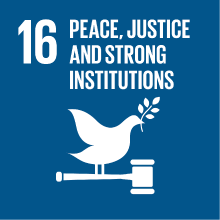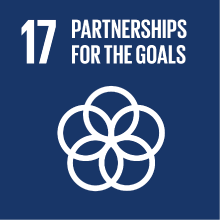ISLAMIC ARCHAEOLOGY AND ART HISTORY
- Academic year
- 2021/2022 Syllabus of previous years
- Official course title
- ARCHEOLOGIA E STORIA DELL'ARTE ISLAMICA
- Course code
- FT0522 (AF:331858 AR:189424)
- Teaching language
- Italian
- Modality
- On campus classes
- ECTS credits
- 6
- Degree level
- Bachelor's Degree Programme
- Academic Discipline
- L-OR/11
- Period
- 4th Term
- Course year
- 2
- Moodle
- Go to Moodle page
Contribution of the course to the overall degree programme goals
It is conceived as an introduction to the archaeology that deals with the study of the Mediterranean and of the Middle East in the long Islamic period, between the 7th and the 15th centuries. Students will acquire a basic knowledge of the main streams of research the discipline of Islamic archaeology has addressed so far and he/she will develop specific analytical and critical skills in relation to the various themes.
Expected learning outcomes
Pre-requirements
Contents
The course may also include lectures on specific subjects offered by external experts.
Referral texts
- Ignacio Arce, The Palatine City at ‘Amman Citadel: The Construction of a Palatine Architecture under the Umayyads, in K. Bartl and A.R. Moaz (a cura di), Residences, Castles, Settlements. Transformation Processes Between Late Antiquity and Early Islam in Bilad al-Sham, Rahden (OrA 24) 2008, pp. 183-216.
- L. Arcifa, A. Bagnera, A. Nef A. Archeologia della Sicilia islamica: nuovi spunti di riflessione, in Ph. Sénac (a cuta di) Villa 4, Histoire et archeologie de l’Occident musulman (VIIe-XVe siecle), Toulouse 2012, pp. 241-274.
- A. Bagnera, E. Pezzini, I cimiteri di rito musulmano nella Sicilia medievale. Dati e problemi, MEFRAM, 116, 2004/1, pp. 231-302.
- Graziella Berti, Pisa: ceramiche e commerci (2ªmetà X-1ª metà XIV s.), in S. Gelichi (a cura di) Atti I Congresso Nazionale di Archeologia Medievale, Firenze 1997, pp. 346-351.
- Roland-Pierre Gayraud, Le Qarafa al-Kubra, dernière demeure des Fatimides, in M. Barrucand, l’Egypte fatimide, Paris 1999, pp. 443-464.
- D.Genequand, The New Urban Settlement at Qasr al-Hayr al-Sharqi: Components and Development in the Early Islamic Period, in K. Bartl and A.R. Moaz (a cura di), Residences, Castles, Settlements. Transformation Processes Between Late Antiquity and Early Islam in Bilad al-Sham, Rahden (OrA 24), 2008.
- Amir Gorzalczany, A New Type of Cemetery from the Late Mamluk and Early Ottoman Periods from Central Israel, Levant 41/2, 2009, pp. 223-237.
- J. Henderson et al., Experiment and innovation: Early Islamic industry at al-Raqqa, Syria. ANTIQUITY 79(303), 2005, pp. 103-145.
- L. Lazzarini, C. Tonghini, Importazioni di ceramiche mamelucche a Venezia: nuovi dati, AIECM3/9 2012, pp. 402-407.
- Marcus Milwright, An introduction to Islamic Archaeology, Edinburgh University Press, Edinburgh 2010: capitoli scelti.
- A. Molinari, Sicily, The Oxford Handbook of Islamic Archaeology, Oxford 2020, pp. 335-354.
- Alessandra Molinari, La Sicilia islamica: riflessioni sul passato e sul futuro della ricerca in campo archeologico. Mélanges de l’École Française de Rome. Moyen Âge 116/1, 2004, pp. 19-46.
- Paolo Peduto, Ceramica medievale d'importazione nella Costiera Amalfitana
Rassegna del Centro di Cultura e Storia Amalfitana, 53, Numero Speciale - Giugno 2017, pp. 89-115.
- F. Saccardo, L. Lazzarini, M. Munarini, Ceramiche importate a Venezia e nel Veneto tra XI e XIV secolo, in AIECM2/3, 2003, pp. 395-420 (pdf).
- C. Tonghini, Ceramiche invetriate dell'Egitto e della Syria nei secoli XI e XII: stato degli studi e sviluppo della ricerca, in Décor de lustre métallique et céramique glaçurée, Bari 2005, pp. 21-29.
- Cristina Tonghini, Archeologia medievale e archeologia islamica, Archeologia Medievale, n. speciale 2014, pp. 33-40.
- Alan Walmsley, Urbanism at Islamic Jerash: new readings from archaeology and history, in Achim Lichtenberger, Rubina Raja (eds) The archaeology and history of Jerash, Turnhout (Brepols), 2018, pp. 241-256.
- Oliver Watson, Revisiting Samarra: the Rise of Islamic Glazed Pottery, Beiträge zur Islamischen Kunst und Archäologie 4, Wiesbaden 2014, pp. 123-142.
Assessment methods
A complete list of the topics on which the exam questions will be focused will be published upon completion of the course.
Type of exam
Teaching methods
2030 Agenda for Sustainable Development Goals
This subject deals with topics related to the macro-area "International cooperation" and contributes to the achievement of one or more goals of U. N. Agenda for Sustainable Development


